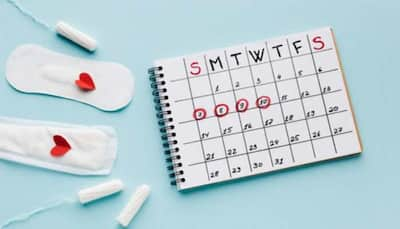Over time, through countless conversations, product trials, feedback and just listening – really listening – one thing became clear: most menstruators aren’t really taught how to manage their periods. They pick up habits from moms, friends, or ads, and stick to them without a second thought. They become routine. Familiar. But familiar doesn’t always mean right.
And as someone who doesn’t experience periods but helps build products for those who do, the least I can do is keep listening, learning, and sharing what I learn – in the hope it helps someone else rethink what’s been “normal” for too long.
Some of the most common period habits – the ones that feel harmless or just convenient – might actually be doing more damage than most people realise.
Here are a few of them as shared by Ketan Munoth, Co-founder of Plush.
Back-to-back meetings, a long commute, or just plain forgetfulness, and suddenly it’s been 8… 10… 12 hours. And if the pad doesn’t look full, it’s easy to assume it’s fine.
But here’s what I’ve learned: it’s not just about how much it’s absorbed – it’s also about what’s building up on it. The warm, moist environment can become a breeding ground for bacteria. Left too long, it can lead to discomfort, rashes, or even infections.
As a general rule, change your pad every 6-8 hours, even if it doesn’t look “used up.” Your body (and skin) will thank you.
A single flushed pad can block an entire building’s plumbing. And the black plastic disposal bags? They take forever to break down. The result? Centuries of waste piling up in landfills – or worse, polluting our water bodies.
A few small swaps can help:
● Never flush pads.
● Use biodegradable disposal pouches instead of plastic. Every better choice matters.
Many pads on the market are scented to smell “fresh,” but those perfumes are often made of synthetic chemicals.
They’re not just unnecessary – they can also cause irritation, throw things off balance down there, or trigger allergic reactions for some people. The truth is, your period doesn’t need fragrance. It needs breathable, gentle materials and ingredients that don’t interfere.
Those coloured or patterned pads – they look nice, sure. But some of that “prettiness” comes from dyes and additives that don’t serve any purpose other than appearance. What they can do, though, is increase the risk of rashes, irritation, or sensitivity. It made me realize pads don’t have to look fancy. They just have to feel right. Go for options that are clean, simple, and made without unnecessary extras.
This might be the one I now feel the strongest about. For so long, periods have been treated like something people just have to “deal with.” The culture around periods still tells people to “tough it out” or stay silent. Pain, fatigue & more – all dismissed as normal. But after hearing story after story, I’ve realised: what’s “normal” shouldn’t mean “ignored.”
If something feels off, it deserves attention. Period pain and discomfort aren’t weaknesses – they’re signals. And no one should have to push through in silence. Ask questions. Speak up. Get the support you need.
Because while periods are deeply personal, the products and practices around them often haven’t been. For years, period care has prioritised convenience and mass production, not necessarily comfort, health, or sustainability.
Most people haven’t been given the space or tools to question what they’ve grown up using. They’ve simply adjusted. And that’s the gap we’re trying to close. The good news? The shift doesn’t have to be huge. Even small changes – like checking what’s in your pad, how long you wear it, or how you dispose of it – can make a real difference.
Stay informed on all the , real-time updates, and follow all the important headlines in and on Zee News.








